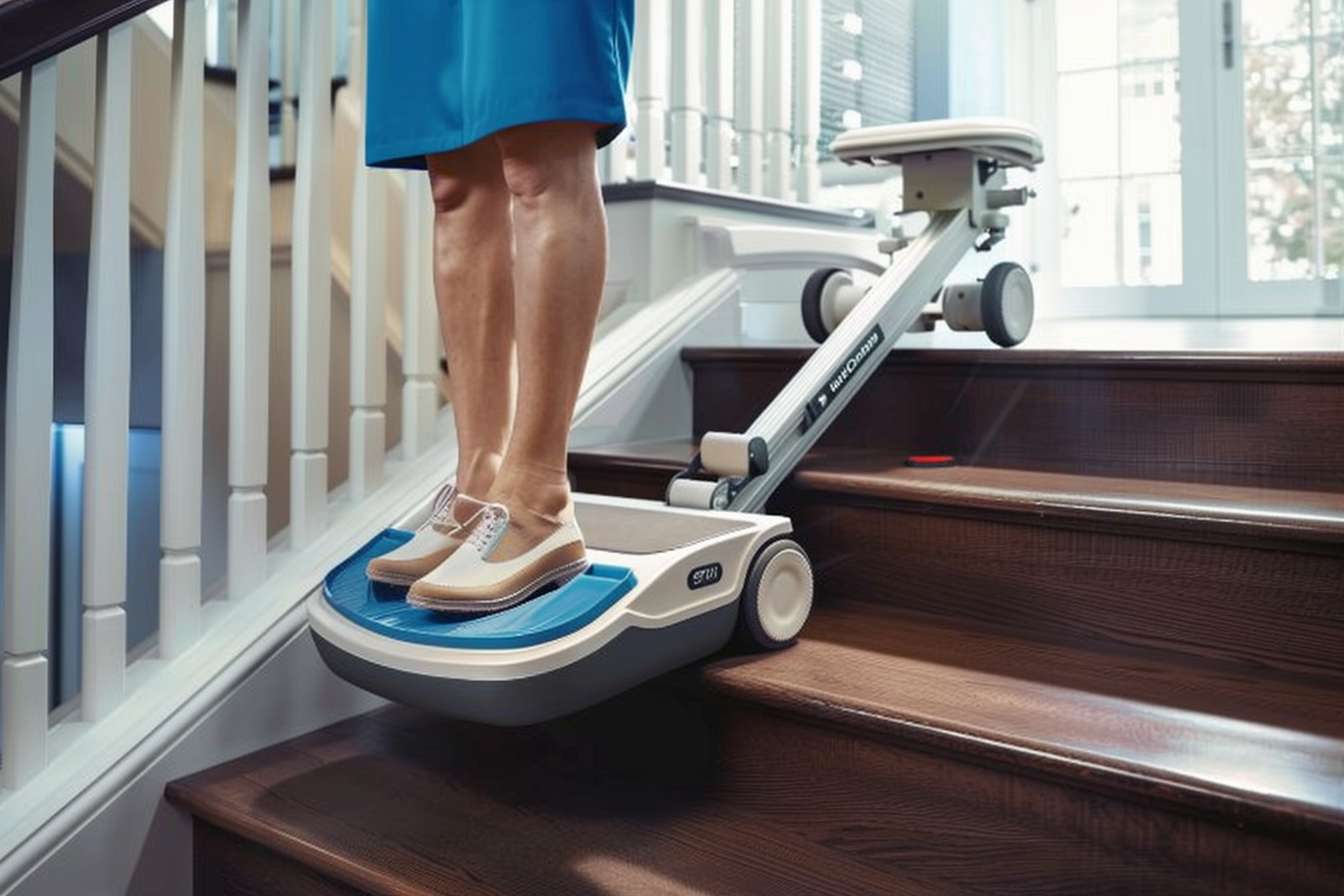New Portable Stairlifts Require No Installation in 2025 (Learn More)
In 2025, a growing number of portable stairlifts in the UK are hitting the market that don’t require permanent installation. These mobility aids are designed to offer flexibility for renters, travellers, or people living in homes where structural changes are restricted. Often battery-powered, lightweight and easy to move, these units provide stair-climbing support without drilling rails into walls or floors. While they may come with trade-offs such as lower weight capacity or fewer custom features compared to fixed stairlifts, for many users the convenience, lower upfront cost, and lack of invasive work are major benefits. As always, it’s important to check safety certifications, battery life, and whether the model is suitable for your stairs or living circumstances before making a purchase.

Portable stairlifts are transforming how people with mobility challenges navigate multi-level homes and buildings across the UK. Unlike traditional fixed stairlifts that require permanent installation on stairways, these mobile solutions offer flexibility and convenience without structural modifications. The upcoming 2025 models promise even greater portability and ease of use, with advanced features that eliminate installation requirements altogether.
How Do No-Installation Stairlifts Work?
Portable stairlifts operate on a fundamentally different principle than their fixed counterparts. Rather than being permanently attached to a stair rail, these devices typically feature a motorized unit with specialized treads or wheels that can climb stairs while carrying a seated person. The operator—often a caregiver—controls the movement using intuitive handheld controls. Some models employ rechargeable battery technology that provides multiple trips on a single charge, making them practical for daily use without requiring electrical outlets nearby.
The technology behind no-installation stairlifts has evolved significantly, with 2025 models incorporating lightweight yet durable materials such as aircraft-grade aluminum and high-strength polymers. These advancements reduce the overall weight while maintaining stability and safety standards. Many units now feature intelligent sensors that detect obstacles and automatically adjust to different stair angles and configurations.
Benefits of Transportable Mobility Aids for Stairways
The primary advantage of portable stairlifts is their versatility. They can be used in multiple locations—ideal for individuals who frequently visit family members or travel between residences. This transportability eliminates the need for installing multiple fixed units in different locations, offering significant cost savings over time.
For landlords and tenants, these devices provide an excellent solution that doesn’t require permanent modifications to property. This makes them particularly valuable in rental situations where structural changes might not be permitted. Healthcare facilities also benefit from the ability to deploy these mobility aids wherever needed throughout their buildings, maximizing resource efficiency.
Additionally, portable stairlifts address emergency evacuation concerns, as they can assist mobility-impaired individuals down stairs during power outages when elevators are inoperable. The 2025 models are expected to feature enhanced emergency functionality with backup power systems and simplified rapid deployment mechanisms.
Comparing Portable Stairlifts Available in the UK Market
The UK market offers several options for those seeking portable stairlift solutions. Each model comes with unique features tailored to different user needs and stairway configurations. Understanding the differences between available options helps in making informed decisions based on individual requirements.
Some models prioritize lightweight design for easier transportation, while others focus on robustness for handling heavier users. Battery life varies significantly between models, with premium options offering up to 30 floors of travel on a single charge. Control systems range from simple button interfaces to sophisticated digital controls with safety redundancies.
Key Features to Look for in No-Installation Stair Lifts
When evaluating portable stairlifts, several critical features deserve attention. Weight capacity is paramount—most standard models accommodate users weighing up to 120-150 kg, though specialized bariatric versions can handle more. Battery life determines how many trips can be completed before recharging is necessary, with top models offering 20-30 trips per charge.
Safety features should include emergency stop buttons, seat belts, and anti-slip footrests. Some advanced models incorporate stability control systems that automatically adjust to maintain balance on different stair configurations. Comfort features such as padded seating and adjustable armrests can make a significant difference for users who may spend considerable time in the device.
Ease of transport is another crucial consideration. Look for models that can be quickly disassembled into manageable components or folded into compact configurations that fit in standard vehicle trunks. The weight of individual components should be manageable for caregivers who will be handling the equipment.
Portable Stairlift Options and Pricing in 2025
The portable stairlift market is expanding with several manufacturers offering diverse options at various price points. Understanding the available choices helps consumers make informed decisions based on their specific needs and budget constraints.
| Model | Manufacturer | Key Features | Estimated Price Range |
|---|---|---|---|
| MobilityClimber Pro | Stannah Mobility | 160kg capacity, 25 trips per charge, digital display | £3,200 - £3,800 |
| FreedomGlide 2025 | Acorn Mobility | Foldable design, 130kg capacity, remote control | £2,800 - £3,400 |
| TravelLift Ultra | Handicare | Lightweight (25kg), quick-release battery, smartphone app | £3,500 - £4,100 |
| PortaStair X5 | Thyssenkrupp | All-terrain wheels, 180kg capacity, automatic folding | £4,200 - £4,800 |
| EasyClimb Compact | Otolift | Ultra-compact storage, 120kg capacity, one-button operation | £2,500 - £3,000 |
Prices, rates, or cost estimates mentioned in this article are based on the latest available information but may change over time. Independent research is advised before making financial decisions.
Many manufacturers offer rental options as well, typically ranging from £80-£150 per week, which can be cost-effective for short-term needs. Some local authorities and charities also provide financial assistance programs for mobility equipment, potentially reducing out-of-pocket expenses for eligible individuals.
Maintenance and Care for Transportable Mobility Aids
Proper maintenance ensures the longevity and safe operation of portable stairlifts. Unlike fixed installations that require professional servicing, many portable models are designed for simple user maintenance. Regular battery charging according to manufacturer guidelines prevents power failures during use. Cleaning the treads or wheels regularly removes debris that could affect traction on stairs.
Moving parts should be inspected before each use, with particular attention to locking mechanisms and safety features. Many 2025 models will include self-diagnostic systems that alert users to potential issues before they become serious problems. Most manufacturers recommend professional servicing annually to ensure all components remain in optimal condition.
Portable stairlifts represent a significant advancement in mobility technology, offering independence without permanent home modifications. As 2025 approaches, these transportable solutions continue to evolve with improved features, greater reliability, and enhanced user experience, making stair navigation accessible to more people than ever before.




